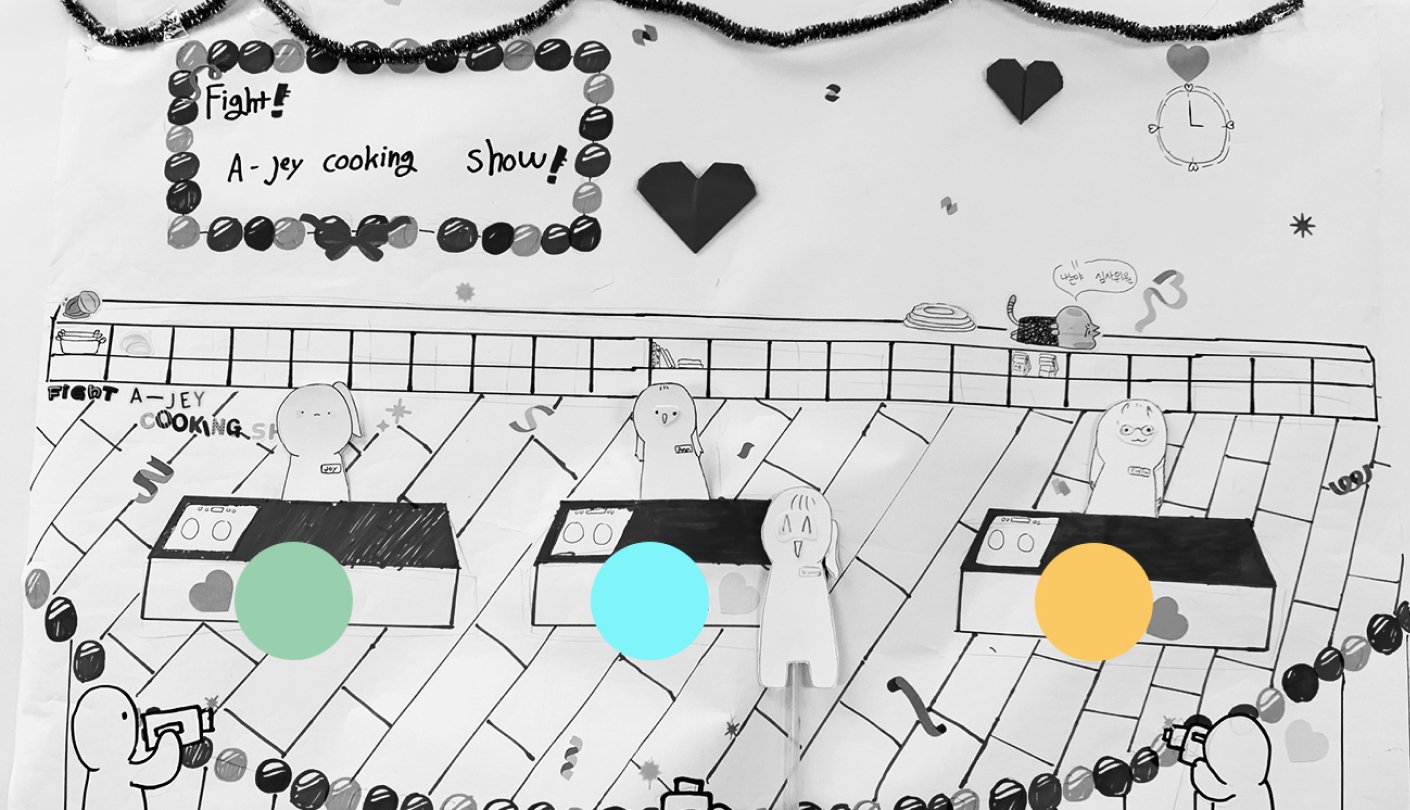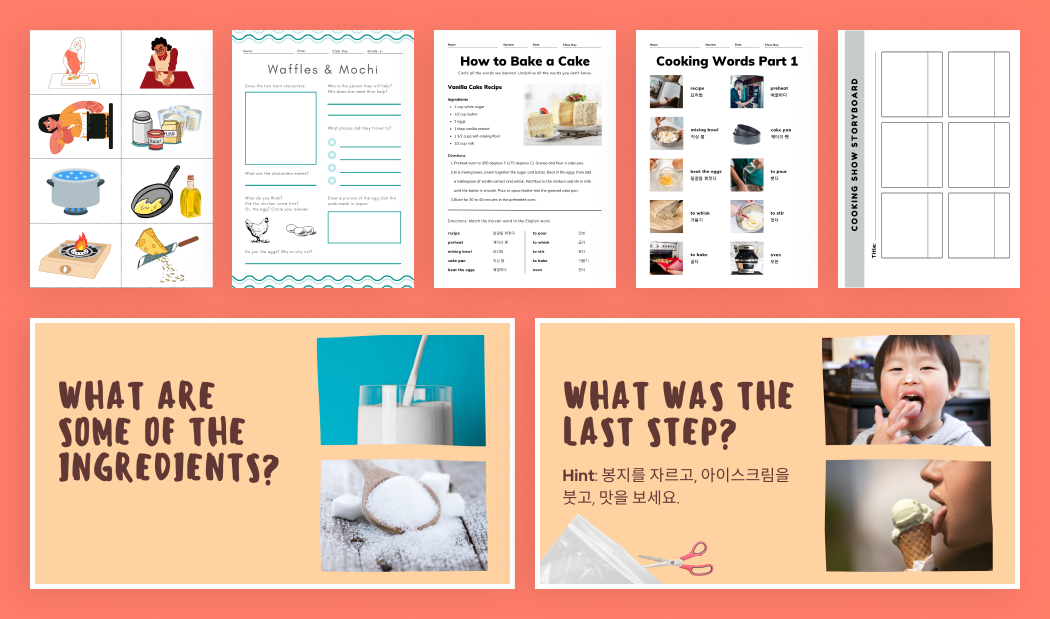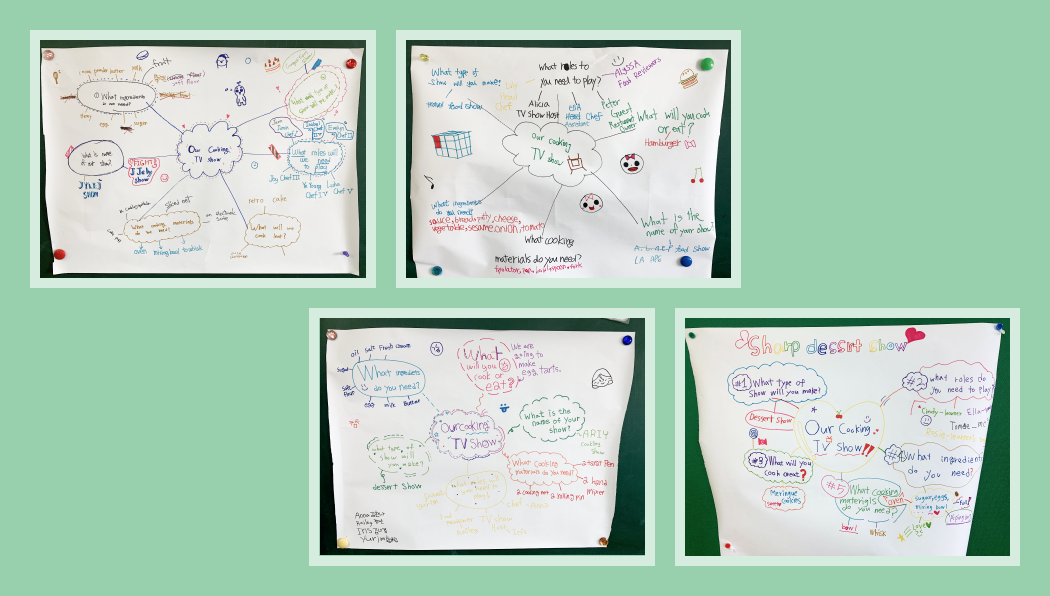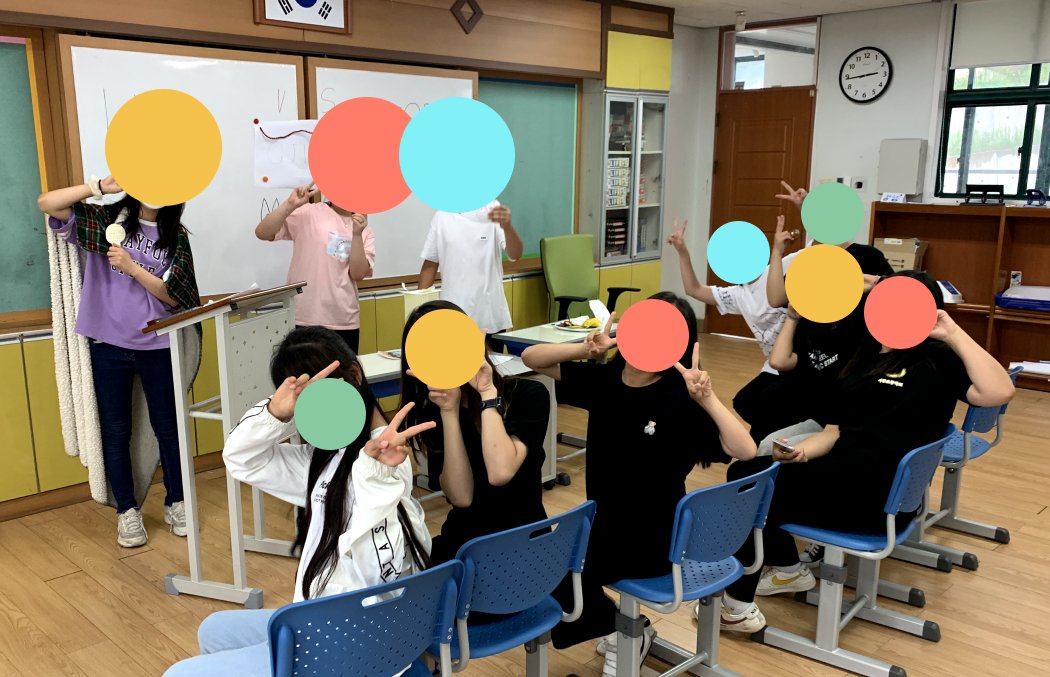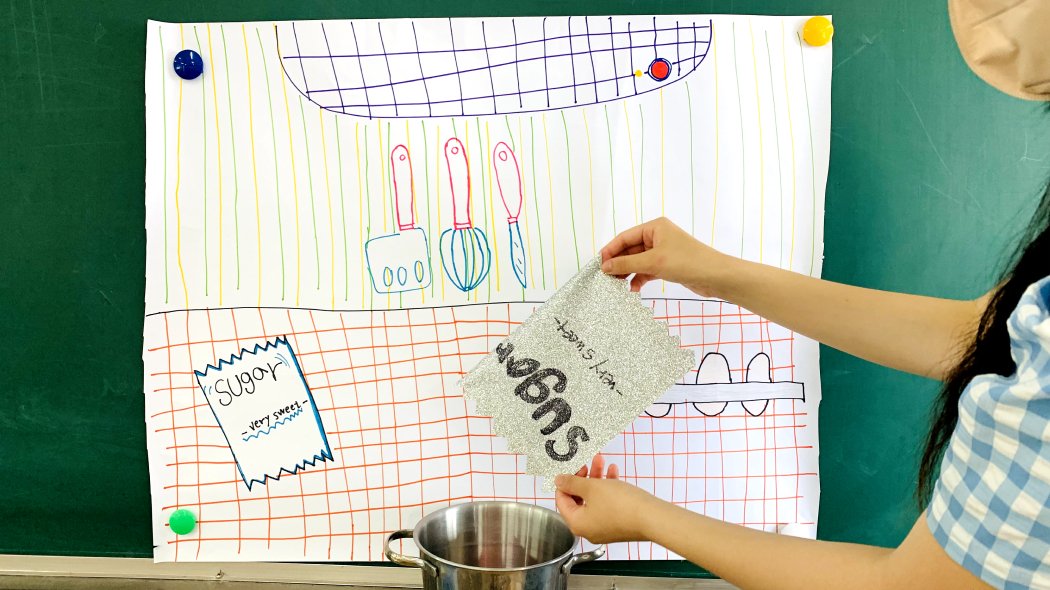The Big Idea
For our conversation club class, students wrote down topics they were interested in. Together, we randomly selected one of the topics from a jar. The topic we chose was “cooking.”
Project Objective and Curriculum
Students design and role play a cooking show in order to learn common cooking vocabulary and phrases.
I made a rough curriculum plan, knowing things could change week to week based on my students’ progress. However, every week, I made a detailed lesson plan.
Role
ESL English Teacher
Grade / Level
Elementary, Grade 6
Express English Club
Low-High Beginner ESL
Lesson Timeline
April - June 2022 (10 weeks)
Setting the Stage
Pre-Learning Materials and Activities
Every week, my club students watched clips from cooking shows, practiced listening and comprehension skills, and reviewed and learned cooking vocabulary and phrases through games and activities. We did this each week before starting our project, as well as shortened versions of this during our project weeks.
Students’ mind maps for their cooking shows. We used and referenced them throughout the project.
Brainstorming and Storyboarding
Students collectively researched, brainstormed, implemented, and executed their cooking show ideas into a script written in English. Once the script was complete, they recorded the audio for the show.
A range of lesson materials created for the “Create a Cooking Show” project.
I let the students write their storyboards in Korean first. This helped them not hold back from the ideating process. Later we worked on translating their script into English.
Prop and Set Design
Students designed props and backdrops based on their script’s needs, themes, goals, and visual direction.
Presentation and Outcome
Students presented their cooking show skits live to their classmates. Together, we filmed the shows, which were later edited in post-production using Canva. Once all the videos were edited, club students watched and reviewed each show together. They wrote feedback and comments for each other. They also wrote down what they individually learned from their classmates’ projects.
A selection of the top videos was shown in their Grade 6 English classes during a lesson related to healthy eating habits.
A group of students smile for the camera before they perform their skit.
A video clip of a hamburger made out of craft materials. This video was part of a cooking show where contestants compete to make the best hamburger.
Students’ created a cooking show using characters, backdrops, and props they made themselves.
A clip from a stop motion style baking show.
A video clip from a cooking show where students’ compete to make the best tteokbokki (a spicy Korean rice cake dish).
Key Takeaways
TAKEAWAY 1
Scaffolding is Key
Scaffold the lesson plan and script writing components, so each step can be successfully completed by a variety of English as a Second Language (ESL) levels.
TAKEAWAY 2
Estimate More Time
Build in more time for review, research, practice, creation, and play at all phases. Things always take longer than you think. So, adapt and adjust the lesson schedule as needed so students can explore and delve in deeper where they need to.

